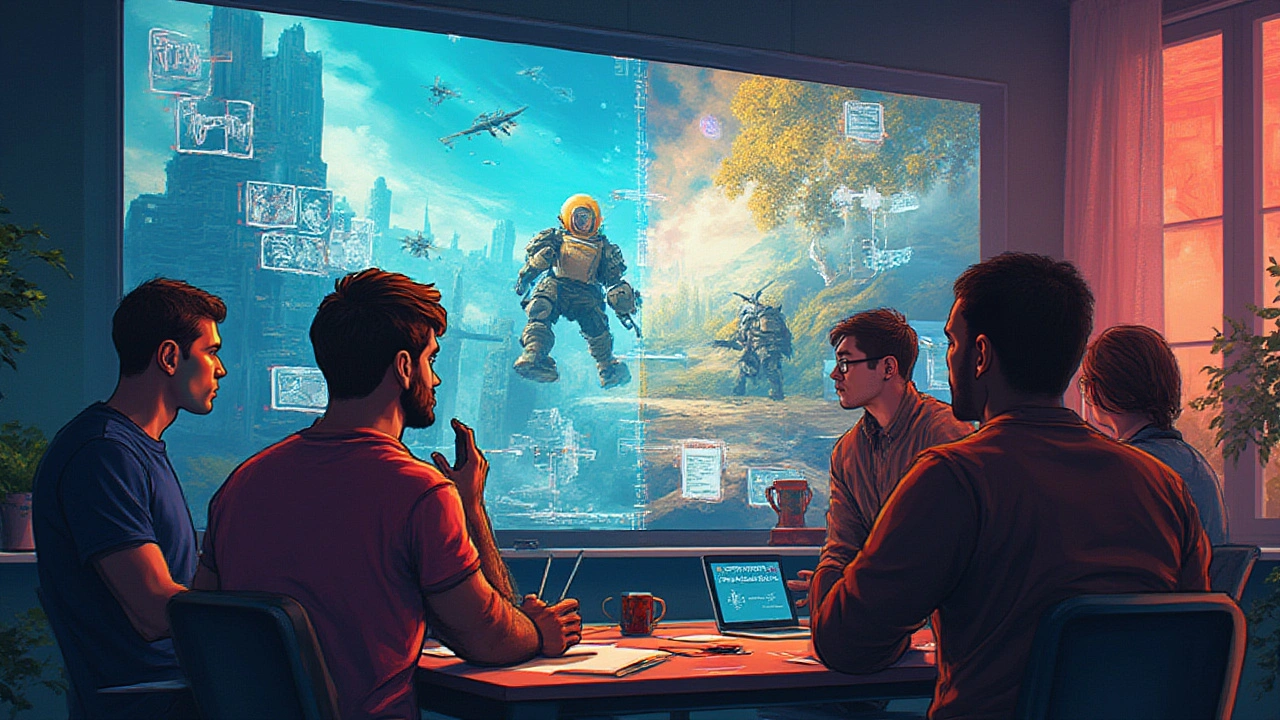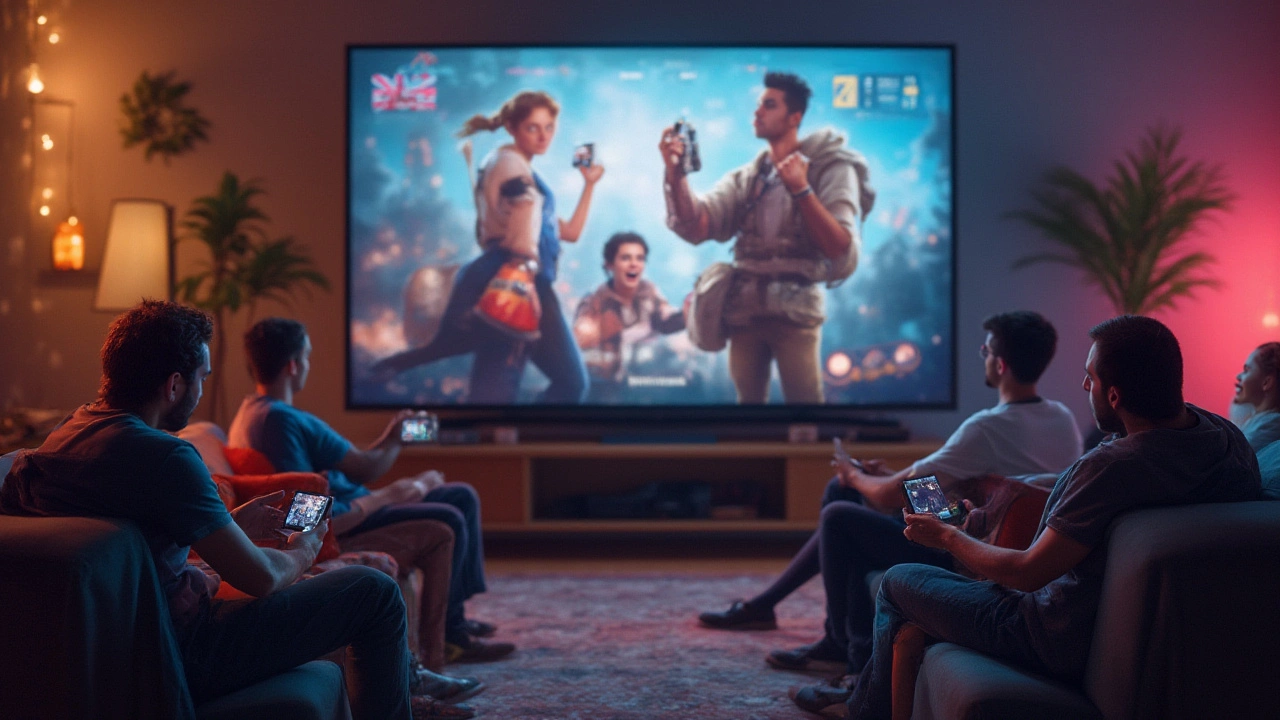Picture this: you’re about to score a winning goal in your favorite football game, but just off the sideline, a digital Gatorade billboard flashes. You might not even notice it at first. But brands? Oh, they’re celebrating. In-game advertising has woven real-world marketing into the digital playgrounds where we spend our leisure hours. This isn’t a passing trend anymore—it’s rapidly becoming one of the hottest battlegrounds in digital marketing because gamers now outnumber Netflix subscribers worldwide. With billions pouring into the industry, it’s not just the big studios cashing in; indie devs, influencers, and brands of every flavor are in on the action.
Let’s look at the whole arena—how in-game ads are evolving, where the ethical lines are drawn, and how brands are making these moments less intrusive and more memorable.
Why In-Game Ads Matter Now More Than Ever
Games are everywhere. If you think gaming just means teenagers battling in basements, think bigger. The Entertainment Software Association’s 2024 report found that 66% of Americans play video games—twice as many as a decade ago. Mobile gamers alone clocked more than 180 billion downloads in 2024. That’s a lot of eyeballs, taps, and swipes for advertisers to chase.
What’s changed? First, technology has caught up with marketers’ dreams. Ads can now be slipped in dynamically—meaning you see an Adidas ad in FIFA, but your friend across the world might see Nike instead. These aren’t just static billboards; think interactive quests, branded skins, and full-on events that feel like a natural part of the storyline.
Let’s talk numbers. Statista reported that spending on in-game advertising smashed the $8 billion mark globally in 2024, with forecasts heading north of $10 billion for 2025. One notable example: in May 2025, the much-hyped RPG Star Vistas sold $1 billion in microtransactions during its launch week, with about 15% driven by branded avatar campaigns. Clearly, brands want in-game ad real estate, and the stakes are huge.
Geographically, Asian markets—especially China, South Korea, and Japan—are leading innovation. Over 80% of mobile gamers in China interact with brand-sponsored events or features weekly. But the U.S. and Europe are catching up, driven by esports and casual gaming. A McKinsey survey last winter showed over 43% of adults said in-game ads made them more likely to remember a brand versus standard online banners.
It’s also about attention. Gamers are highly engaged, often spending hours in digital worlds—far more than on social media feed-scrolling. Brands see a golden opportunity: reach consumers where ad blockers don’t work, and where people are actively paying attention.
Still, some worry about backlash or fatigue. The secret sauce, everyone agrees, is making ads more like enhancements than interruptions. When done right, these moments not only lift brands but also deepen a player’s bond with the game world. Get it wrong, though, and you’ve got a recipe for viral outrage on Reddit.
| Year | Global In-Game Ad Spending (USD) | Percentage of Mobile Gamers Exposed |
|---|---|---|
| 2022 | $6.5B | 68% |
| 2023 | $7.2B | 73% |
| 2024 | $8B | 78% |
| 2025 (Est.) | $10B | 83% |
Types of In-Game Ads: What Works in 2025
In-game ads come in all shapes and sizes in 2025, from the simple to the immersive. Let’s break them down:
- Static Ads: Think billboards in racing games or logos on stadium walls. You see these everywhere—easy to spot, and easy for brands to buy and swap out. But the static ones are getting smarter, often adjusting based on your region or game progress.
- Dynamic Ads: These are the fun ones. Dynamic ads load in real-time and can change based on your location, behavior, or even time of day. Imagine a subway poster in a city-building sim switching from a fast-food chain to a tech ad when a special event drops.
- Native and Integrated Ads: Brands go bigger by partnering with developers for in-world items, branded missions, or character skins that feel like they belong. Fortnite’s Travis Scott concert in 2020 was a turning point, and now, co-branded in-game concerts, movie previews, and storyline tie-ins are everywhere.
- Rewarded Ads: You’ve probably watched a video ad to earn in-game currency—maybe to unlock a new car or get extra lives. It’s a win-win that most gamers accept, as long as it’s not too frequent or forced.
- Playable Ads: Some games even let you play a mini-version of another game as an advert, turning the pitch itself into a bite-sized demo. This works especially well on mobile, driving interest and installs at sky-high rates.
One clever example: in 2025’s hit life-sim Cozy Cove, players can invite friends to an in-game coffee shop featuring a real-world brand. The catch? You get bonuses for sharing social media posts about your virtual drinks. This blend of real and digital isn’t just clever—it’s a measurable sales driver. Nike’s 2024 campaign in NBA 2K let players design their own sneakers and unlock them both in the game and a special discount code in real life. The result? More than 9 million sneaker designs and a double-digit sales jump for that quarter, according to the company earnings call.
But as formats multiply, so do expectations. In VR and AR games—which are finally starting to grow real user bases—ads are hyper-contextual, showing up as in-world magazines, posters, or even interactive street signs. The big push now is to make ads add to the experience rather than yank you out of it.
Takeaway: every brand and game needs to find what feels natural for their crowd. Gamers smell a cash grab from a mile away, so clever, authentic, or genuinely useful ads stand out.

Balancing Profit and Player Experience
The million-dollar question: How do you make money from ads without ruining the fun? The horror stories are out there. Remember that viral downtime in 2023 when a top-ranked shooter was unplayable because of unskippable car ads? Gamers revolted, and the studio took a massive PR hit. That moment set the tone for 2024 and beyond—players expect respect, not trickery.
Here’s where listening matters. Studios are now building feedback tools directly into games. A survey after an ad-heavy event can highlight whether players felt annoyed or intrigued. One 2024 study by GameRefinery showed that games using integrated or reward-based ads saw player retention jump by 17%—compared to a 28% drop in retention from those with overbearing, interruptive ads.
Gamers are not a monolith, but they all want choice. Optional ads, daily caps on exposures, and clearly labeled sponsored content help. It’s almost like a contract: the player gets perks, and the brand gets a few moments of attention. Transparency is gold.
Developers share some tips:
- Keep ads relevant and contextual. A beer ad in a kids’ farming sim? Instant disaster. But showcase trendy sneakers in a city builder where players customize avatars—now you’re talking.
- Pilot new ad formats on small groups to gauge reaction before full rollout.
- Work with brands open to collaboration and flexibility. The best campaigns let devs tweak creative or timing based on in-game events.
- Incorporate player feedback loops. If an ad is universally hated, swap it out quickly.
And let’s not gloss over the indie scene. For small studios, ads can be a lifeline—sometimes making the difference between profit and closure. But oversaturation or bad fits break trust. Some Indies swear by ad networks that specialize in gaming and let them cherry-pick more appropriate brands or set tighter controls.
One of the coolest ideas from 2025? Customization options where players can opt into certain brand aesthetics for special rewards—like choosing to carry a branded backpack in an open-world adventure game. Nobody’s forced, and those who care get a perk. The key? Let players feel in control.
Measuring Success: What Metrics Actually Matter?
With so many ways to advertise inside games, how do brands—or game makers—know what’s working? Forget about old-school banner click-through rates; in-game, it’s all about player behavior, engagement, and ripple effects across other channels.
Here are metrics everybody’s watching in 2025:
- Brand Recall: Are players remembering the ad, or was it invisible background noise? Brand lift studies (often run right inside the game as quick polls) are the industry norm.
- Engagement Time: How long do players interact with a branded feature? For example, if a Jeep-sponsored off-road race is added to a racing game, how many players try it, replay it, or post about it online?
- Redemption and Conversion: Did people use in-game discount codes or claim real-world rewards? These numbers tell the real story, especially as more brands blend digital and physical incentives.
- Social Buzz: How much chatter does an ad spark? Peaks in Tweets, TikToks, or Reddit posts during a branded event are solid gold for PR teams.
- Churn and Retention: How did ad campaigns affect the core game? Spikes in players leaving (churn) or sticking around longer often highlight how well (or poorly) the ad was designed.
The data isn’t always straightforward. In 2024, a major car brand launched a VR driving experience in a popular open-world game. At first, only 5% of players tried it, but surveys later showed that over 60% of those who did felt more positive about the brand—and engagement on related YouTube content saw a 300% spike.
Let’s get real, though. Plenty of campaigns flop. Players can tune out, ignore, or skip ads that are off tone. That’s why analytics tools now stitch together in-game activity with social listening, real-time feedback, and even biometric trackers (VR headsets monitor where you focus and for how long). The brands getting the highest ROI are the ones quick to adapt—changing ads, content, or even music based on what’s working and what isn’t.
Here’s a quick rundown of top metrics tracked in a recent IAB study:
| Metric | Means of Measurement | 2025 Industry Average |
|---|---|---|
| Brand Recall | In-game surveys | 54% |
| Engagement Time | Logged ad interaction | 46 seconds |
| Promo Code Redemptions | In-game to web conversion | 13% |
| Social Mentions | Hashtag analysis | +220% during campaigns |
| Retention Rate | DAU/MAU Tracking | Up 7% after major events |

Tips for Brands and Developers: Making In-Game Ads Count
So, how can you not just survive, but thrive in the in-game ad world in 2025? Here are some field-tested tricks—straight from marketers, devs, and players:
- Get Creative: The coolest campaigns don’t just slap a logo somewhere. Think limited-run quests, player-driven challenges, or creative UGC (user-generated content) contests. That’s what gets people talking.
- Respect the Flow: Ads should match the game’s art style, tone, and pacing. Hiking boot ads in a post-apocalyptic survival sim? Cool. Fast-food jingles in a medieval fantasy? Not so much.
- Reward Generously: Use reward-based ads that give real value—exclusive gear, bonus items, or unlockable content. Players don’t mind ads when they get something fun back.
- Test, Then Scale: Pilot programs on a small audience, collect feedback, tweak, then go big. Rapid iteration beats guessing every time.
- Collaborate With Devs: Work closely with game designers who know their audiences best. Their insights prevent cringe campaigns and boost natural integration.
- Track Real Impact: Keep eyes on those core metrics—brand recall, engagement, retention. Social channels are a goldmine for spotting real-time reactions.
- Empower Players: Let people opt in for deeper branded experiences. Give them control, and they’ll give you attention.
- Don’t Overdo It: Stick to a reasonable frequency. Bombarding players rarely works—it just gets you memes and angry threads.
Want a bold move from this year? Several top streamers were given early access to a highly-anticipated shooter and invited to design their own in-game branded spaces—almost like digital pop-up shops. Players flocked to explore the content, and brand mentions on Twitter spiked 450% that weekend.
For indie developers, don’t be afraid to negotiate. The ad tech world is incredibly competitive today, and new platforms are popping up constantly, giving devs more leverage and better rev-share deals than ever before. Read the fine print, push for flexible formats, and prioritize brands that match your audience.
If you’re a marketer, keep one thing in mind: gamers are savvy and loyal. Treat them with creativity and respect, and they’ll remember your brand. Offend them, and, well, the internet never forgets.
So next time that billboard or branded quest pops up mid-game, just remember—it’s not just about selling, it’s about building a real connection in worlds millions call home.


I'm Amelia Kensington, a digital marketer located in beautiful Perth, Australia. My love for market research and consumer behavior led me into the fascinating world of marketing. Currently, I lead a team in developing clever and creative marketing strategies for our diverse portfolio of clients. I also love to share my knowledge and passion, so I write about online marketing trends and tips in my free time. One more thing, I don’t just work hard, but play hard too. Adventure and mystery-filled novels keep my weekends occupied and hiking helps keep my spirit free.